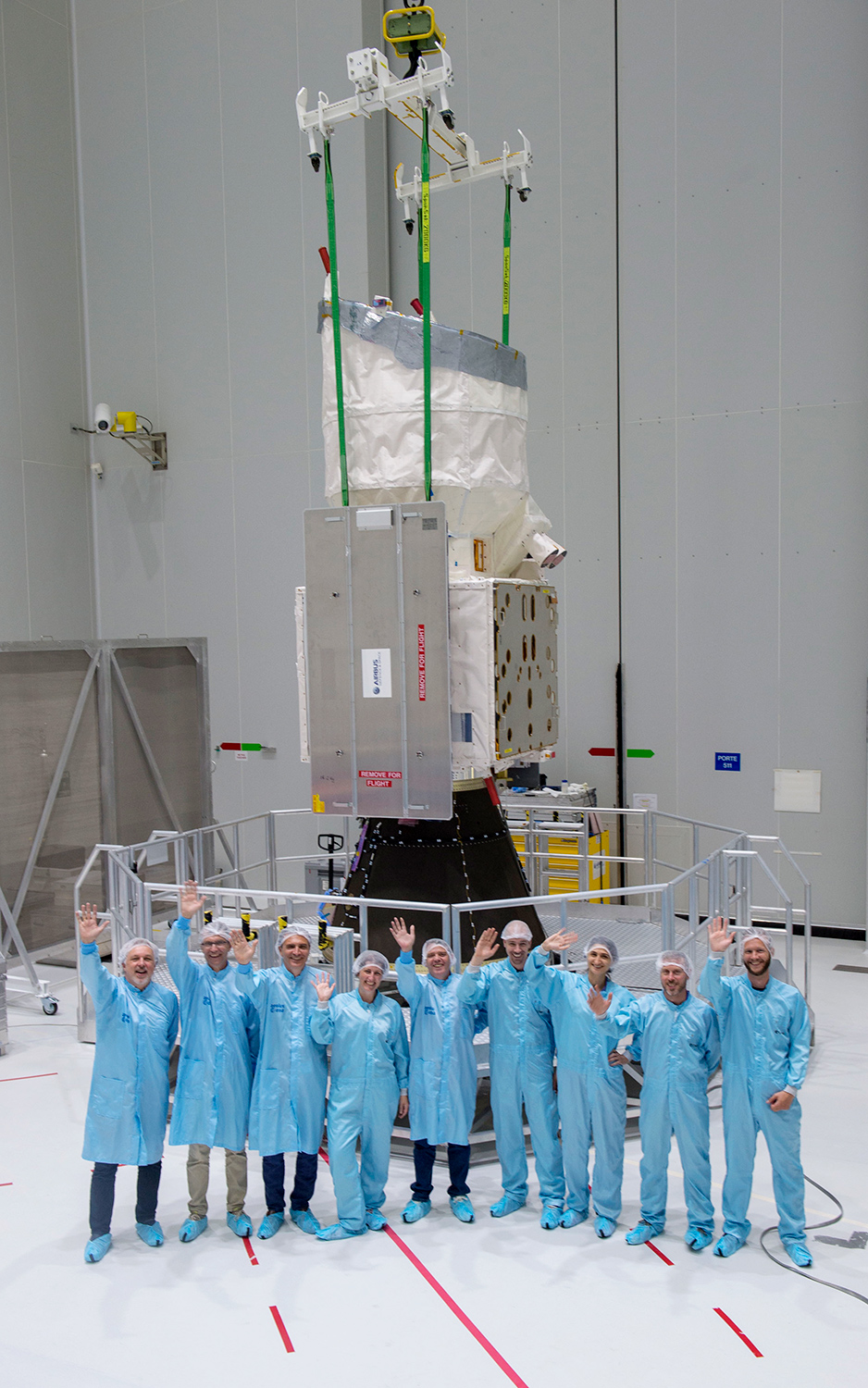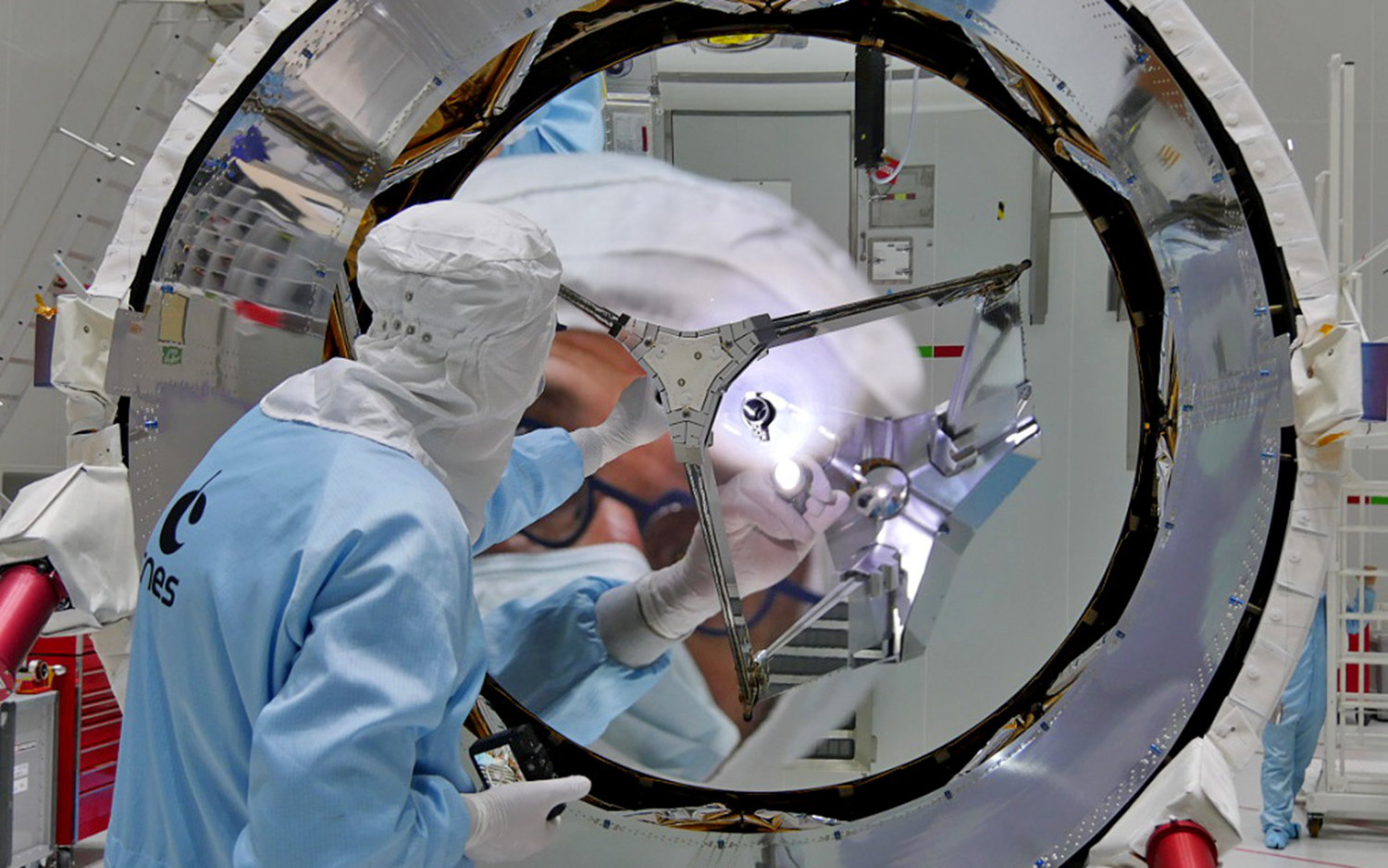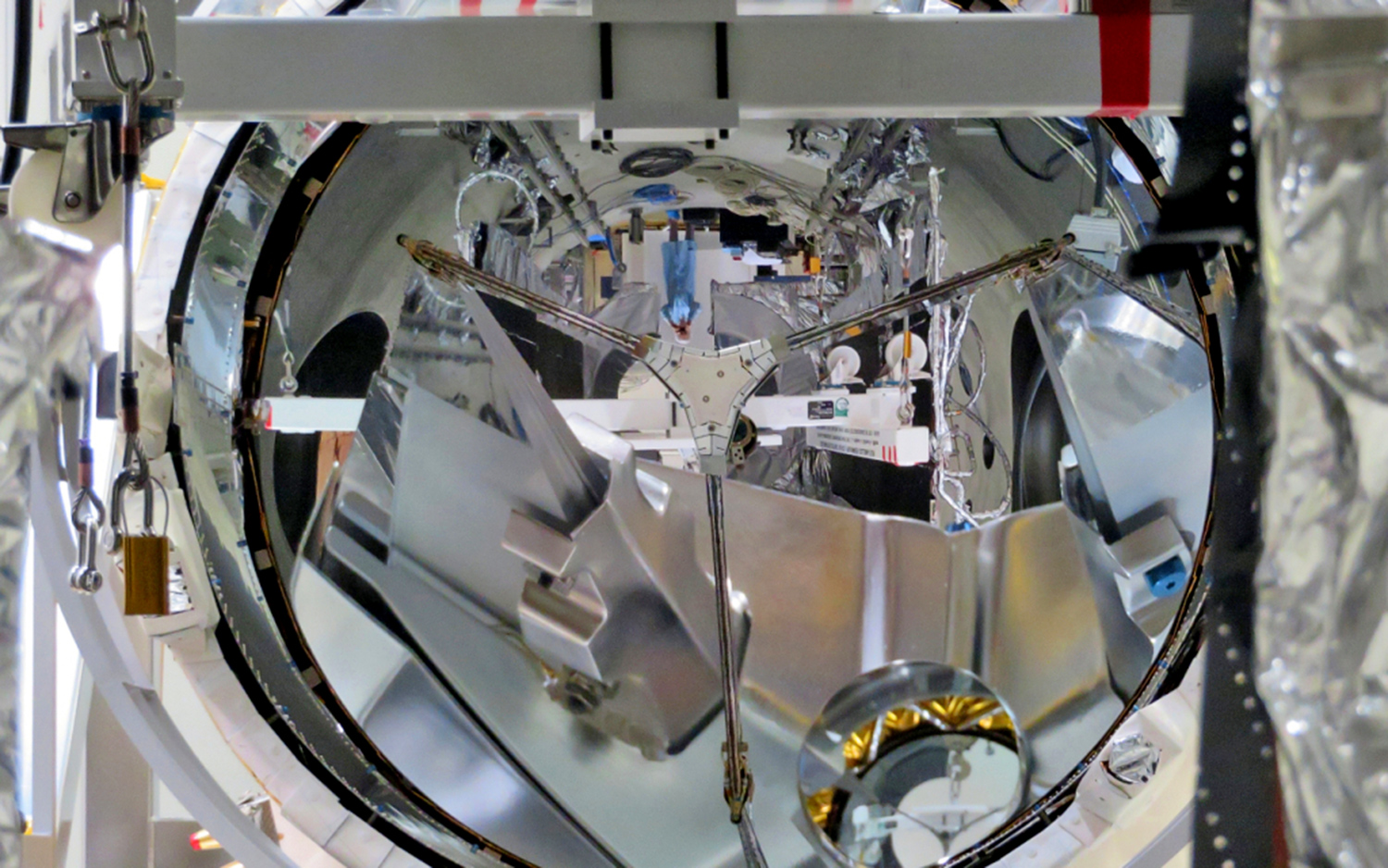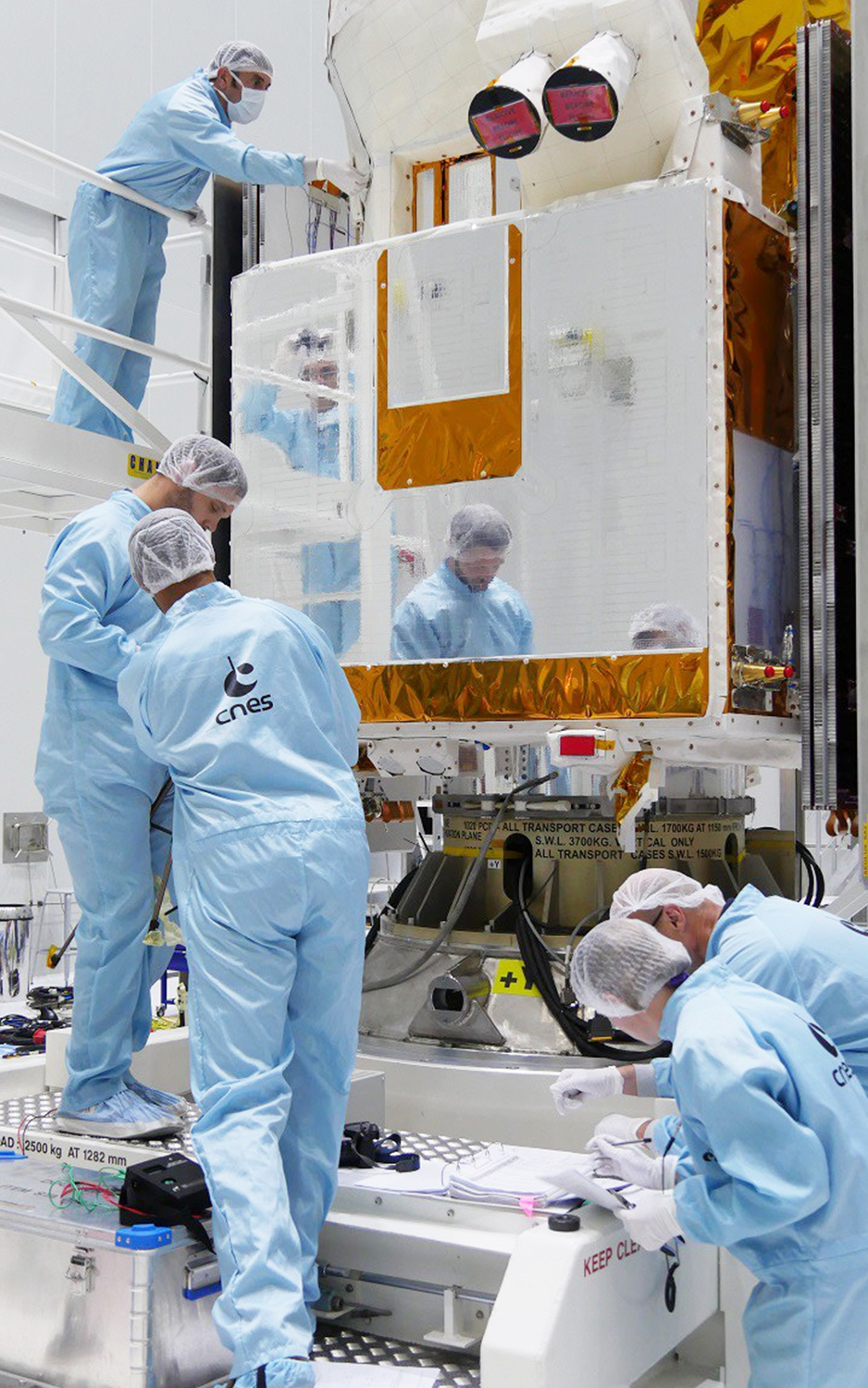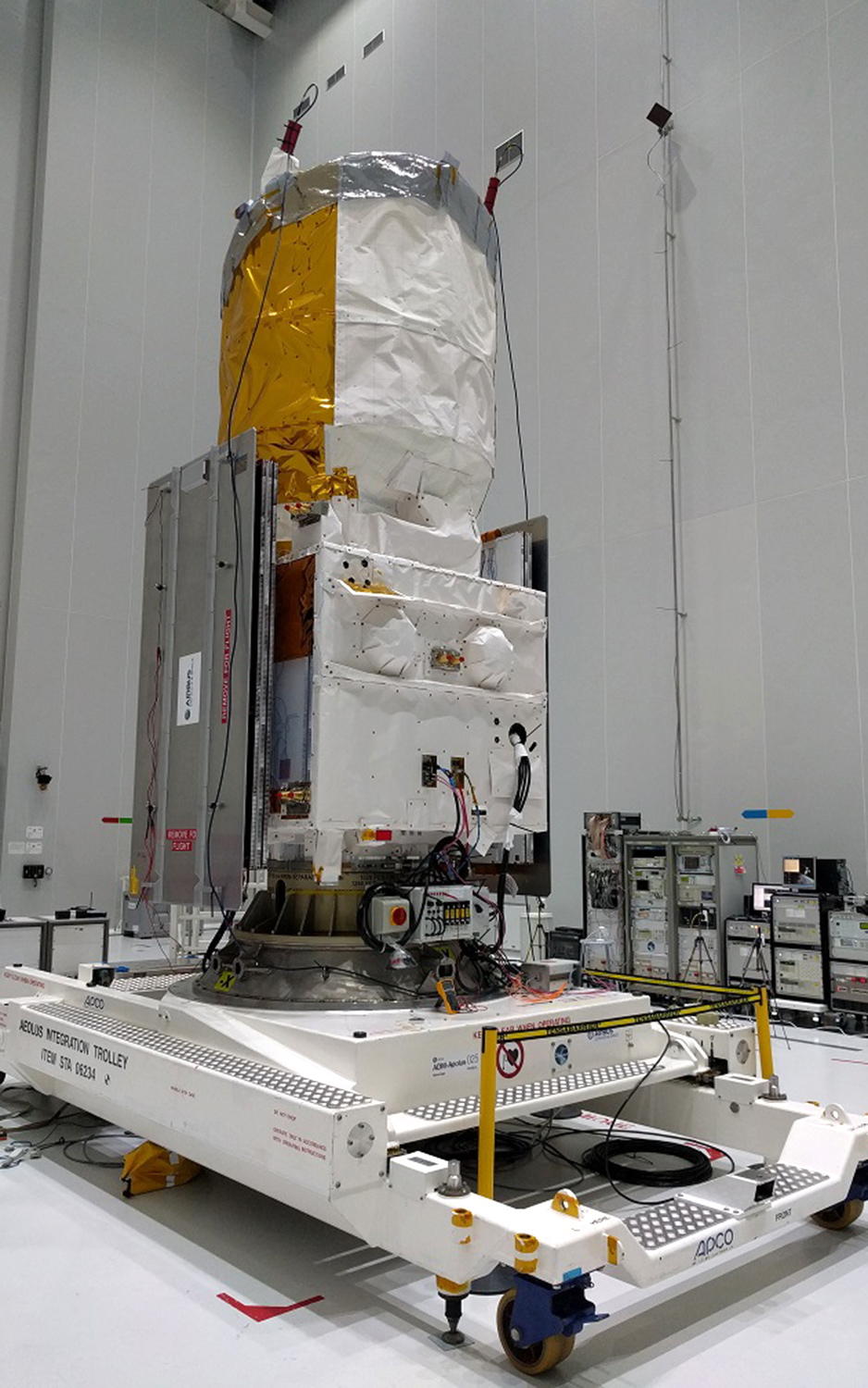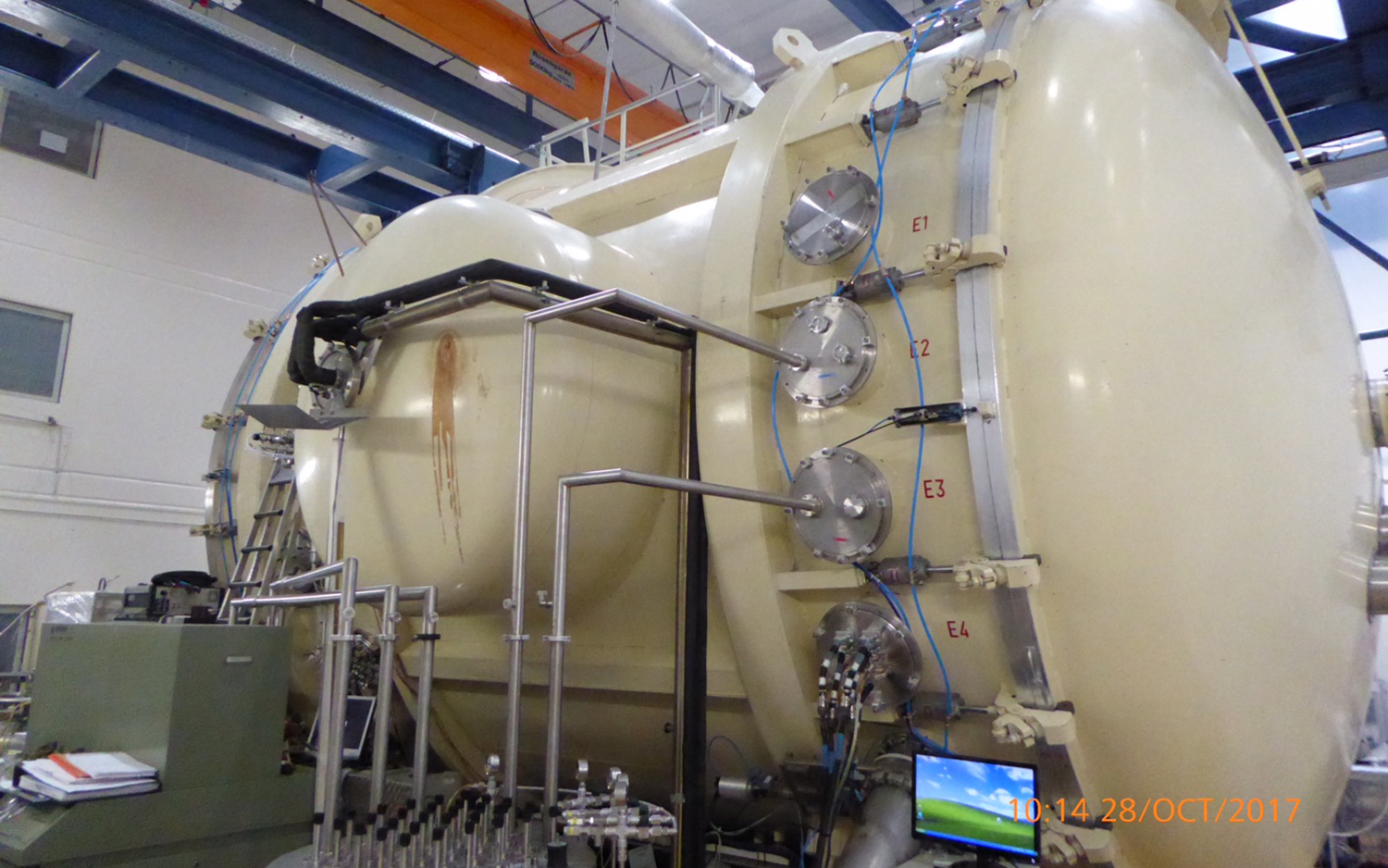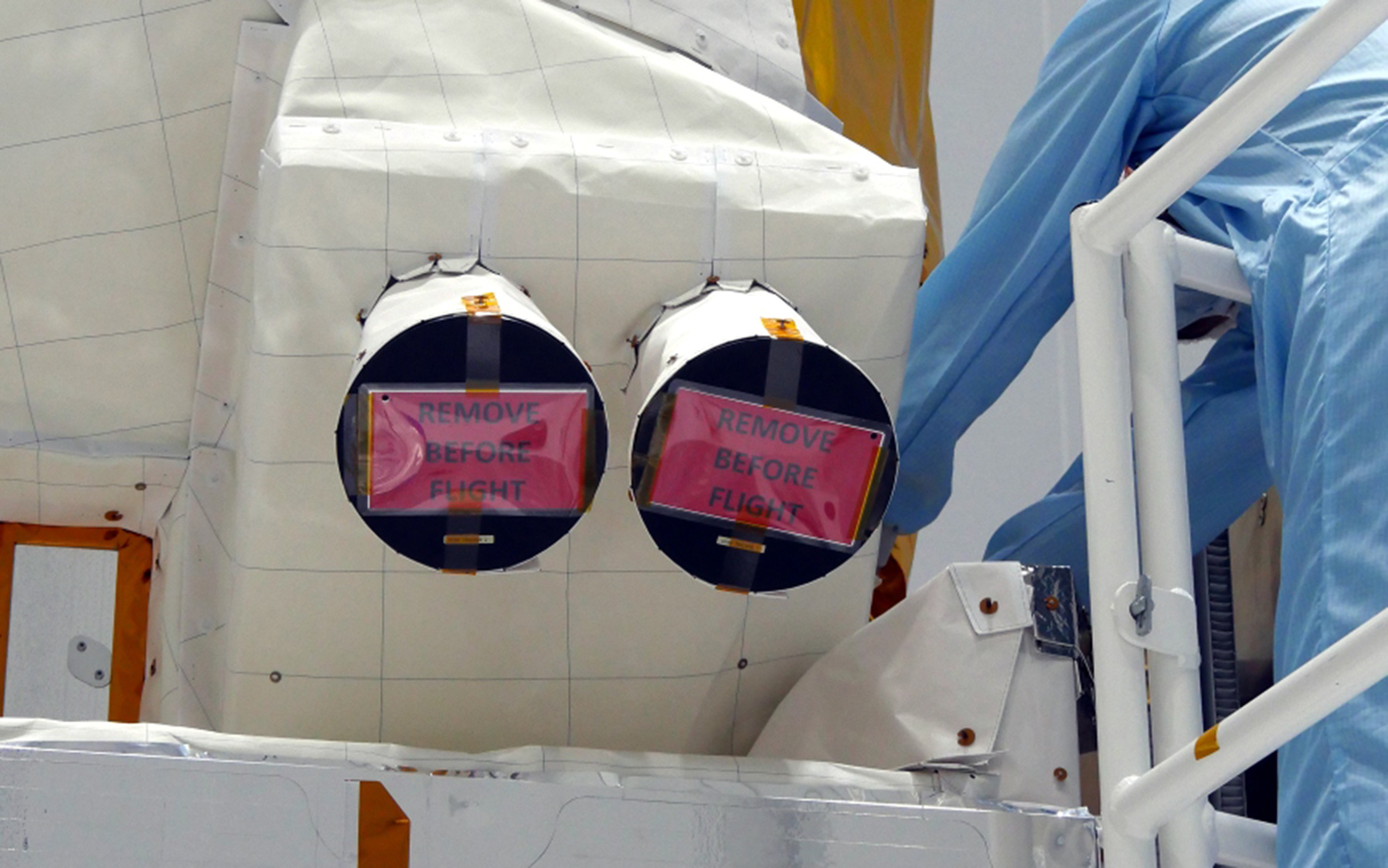In Photos: Vega Rocket Launches 'Aeolus' Wind-Mapping Satellite
Lasers in the Wind
This graphic illustrates how Aeolus will use lasers to measure wind velocities around the globe. The instrument, known as the Atmospheric Laser Doppler Instrument, or "Aladin," works by blasting small laser pulses and collecting the light that scatters off particles in the atmosphere using a 5-foot (1.5 meters) telescope dish.
Listening for Signals from Aeolus
Ground stations around the world will receive signals from Aeolus. This ESA telescope at the New Norcia ground station in Australia was the first to receive a transmission from Aeolus on Aug. 22 at 6:16 p.m. EDT (2216 GMT).
Happy Aeolus Team
European Space Agency scientists post for a photo with Aeolus on July 25, 2018.
Clean and Shiny
An ESA scientist cleans the telescope on Aeolus to prepare it for launch. The telescope will collect backscattered light in the atmosphere to study wind speeds in the atmosphere.
Ready for Vacuum Testing
An ESA scientist appears upside-down in this close-up of the telescope dish on Aeolus. This photo was taken just before Aeolus went into the thermal-vacuum chamber for testing.
All Hands on Deck
Engineers prep the Aeolus satellite for launch.
Aeolus in Kourou
Aeolus stands tall for testing at the Guiana Space Center in Kourou, French Guiana
Breaking space news, the latest updates on rocket launches, skywatching events and more!
In the Vacuum Chamber
Aeolus is sealed inside the thermal vacuum chamber at the Liège Space Center in Belgium for testing.
'Remove Before Flight'
Engineers leave tags that say "remove before flight" on things like protective covers added in the lab to make sure that the components all work properly in space.
In the Clean Room
The Aeolus satellite lays horizontally at the Airbus Defense and Space clean room in Toulouse, France.

Hanneke Weitering is a multimedia journalist in the Pacific Northwest reporting on the future of aviation at FutureFlight.aero and Aviation International News and was previously the Editor for Spaceflight and Astronomy news here at Space.com. As an editor with over 10 years of experience in science journalism she has previously written for Scholastic Classroom Magazines, MedPage Today and The Joint Institute for Computational Sciences at Oak Ridge National Laboratory. After studying physics at the University of Tennessee in her hometown of Knoxville, she earned her graduate degree in Science, Health and Environmental Reporting (SHERP) from New York University. Hanneke joined the Space.com team in 2016 as a staff writer and producer, covering topics including spaceflight and astronomy. She currently lives in Seattle, home of the Space Needle, with her cat and two snakes. In her spare time, Hanneke enjoys exploring the Rocky Mountains, basking in nature and looking for dark skies to gaze at the cosmos.


